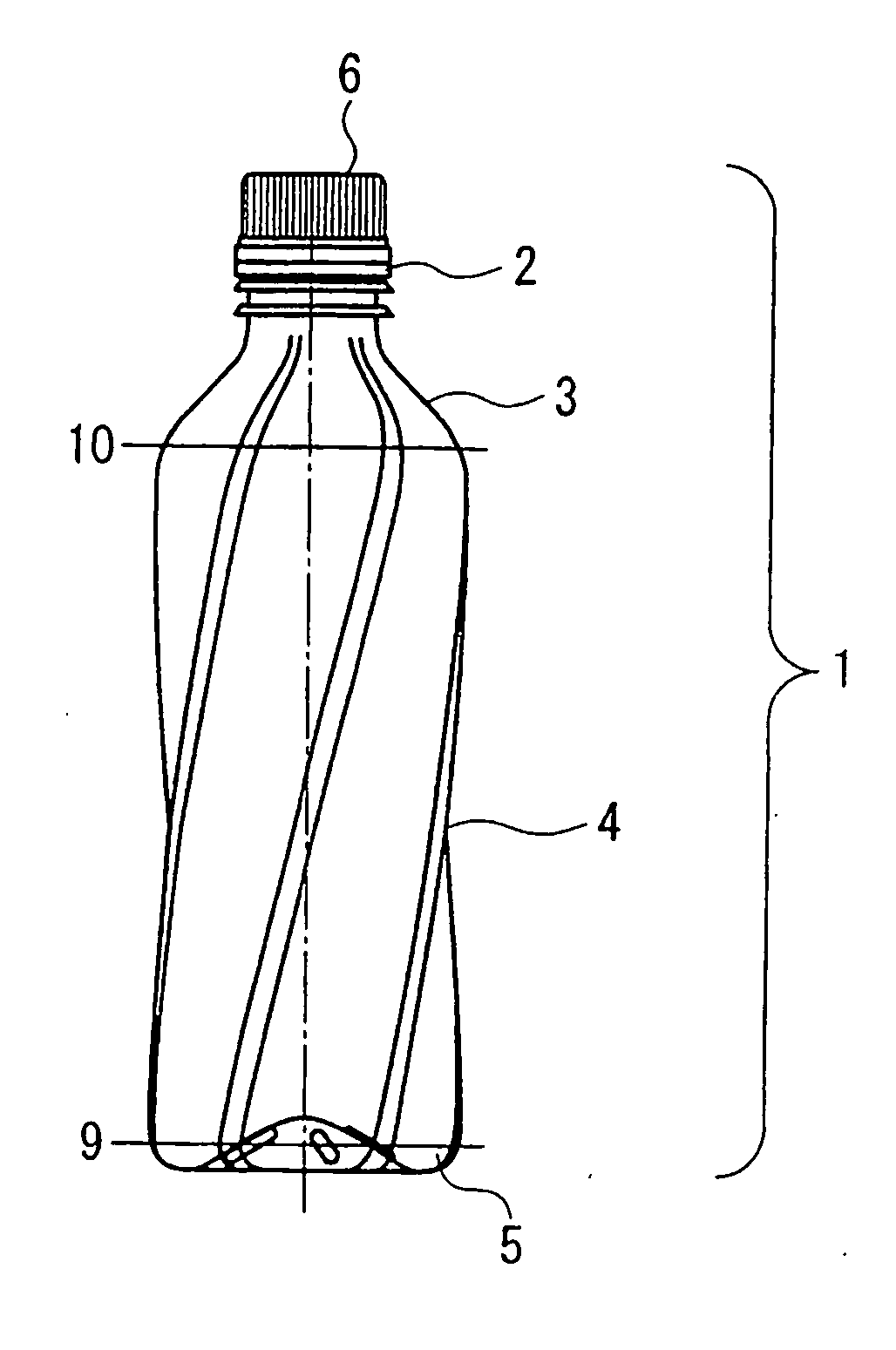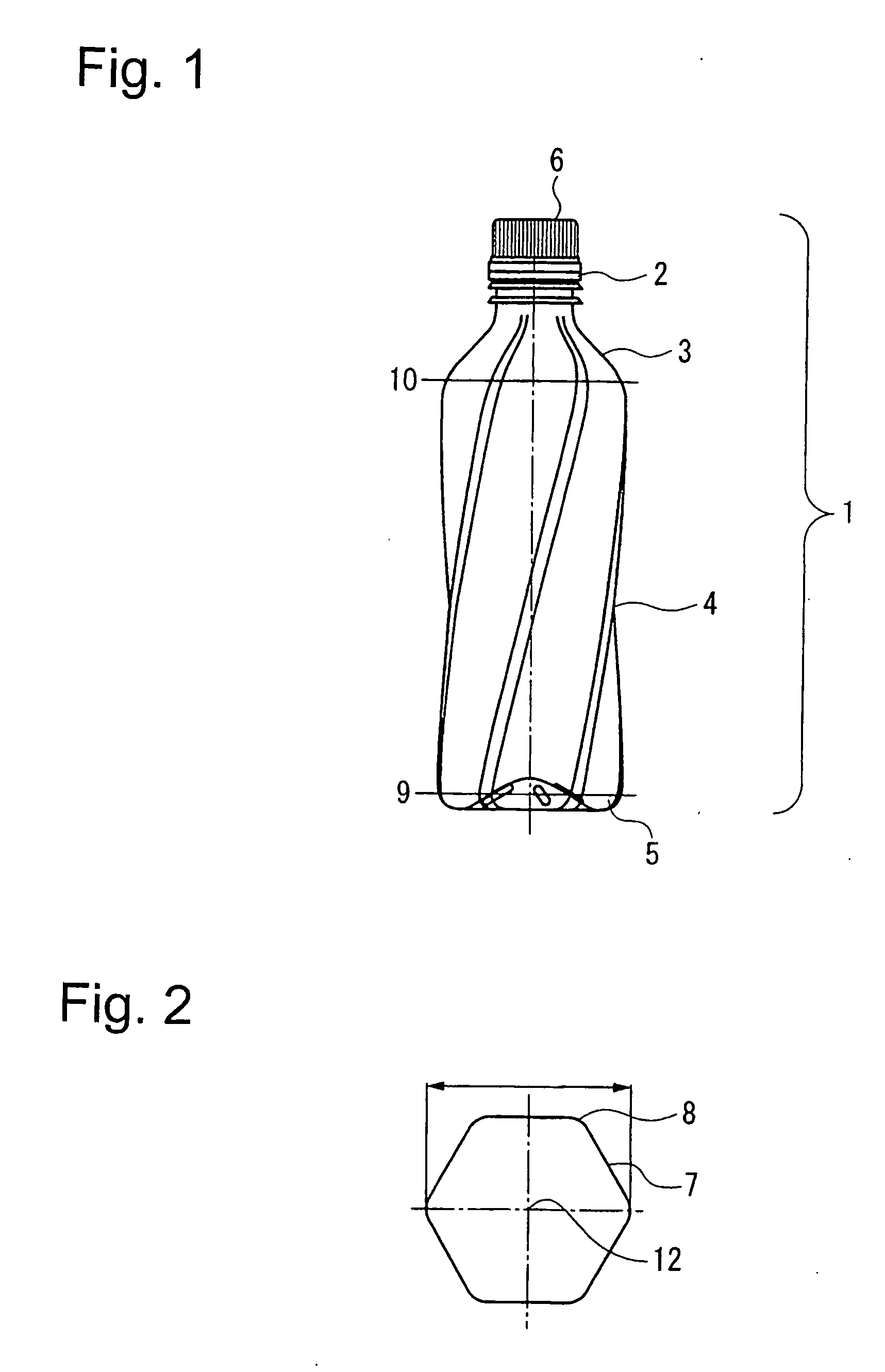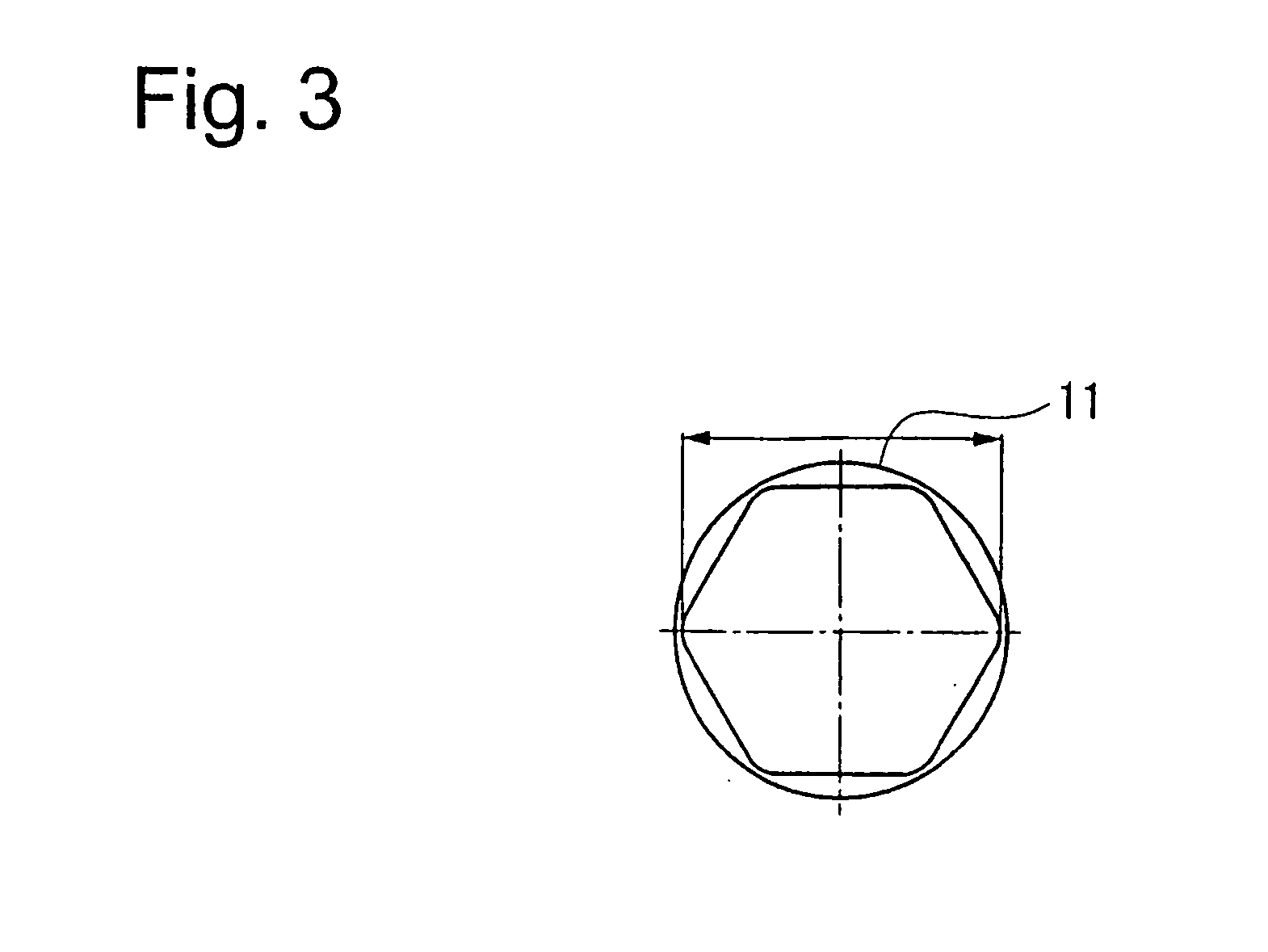Plastic bottles
a technology of plastic bottles and plastic bags, applied in the field of plastic bottles, can solve the problems of shrinkage, shrinkage, and expansion of containers, and achieve the effects of avoiding poor appearance, being convenient for consumers to handle, and being well-designed
- Summary
- Abstract
- Description
- Claims
- Application Information
AI Technical Summary
Benefits of technology
Problems solved by technology
Method used
Image
Examples
example
[0031] An embodiment of the above-mentioned invention is explained by a working example as follows.
[0032] A bottle was manufactured by biaxial stretching blow-molding with use of polyethylene terephthalate. Material resin was used in an amount of 29 g, capacity was 500 ml, maximum diameter was 67 mm, and height was 207 mm. The bottle was composed of neck, shoulder, body and bottom. The cross-sectional shape at the body was a regular hexagon. Each angle of the regular hexagon was rounded off with an arc. Cross-sections had the same shape at any portion of body. Circles circumscribed about the cross sectional shape were identical. The centers of the circumscribed circles were on the same axis. The circumscribed circle had a radius of 33.5 mm. The arc had a radius of 5 mm.
[0033] Cross sectional shape at body was rotated uniformly at a rate of 0.4° / mm around the center, as axis, of circles circumscribed about said cross sectional shape. Total rotation angle was 60 degrees. Also at sho...
PUM
| Property | Measurement | Unit |
|---|---|---|
| rotation angle | aaaaa | aaaaa |
| height | aaaaa | aaaaa |
| diameter | aaaaa | aaaaa |
Abstract
Description
Claims
Application Information
 Login to View More
Login to View More - R&D
- Intellectual Property
- Life Sciences
- Materials
- Tech Scout
- Unparalleled Data Quality
- Higher Quality Content
- 60% Fewer Hallucinations
Browse by: Latest US Patents, China's latest patents, Technical Efficacy Thesaurus, Application Domain, Technology Topic, Popular Technical Reports.
© 2025 PatSnap. All rights reserved.Legal|Privacy policy|Modern Slavery Act Transparency Statement|Sitemap|About US| Contact US: help@patsnap.com



